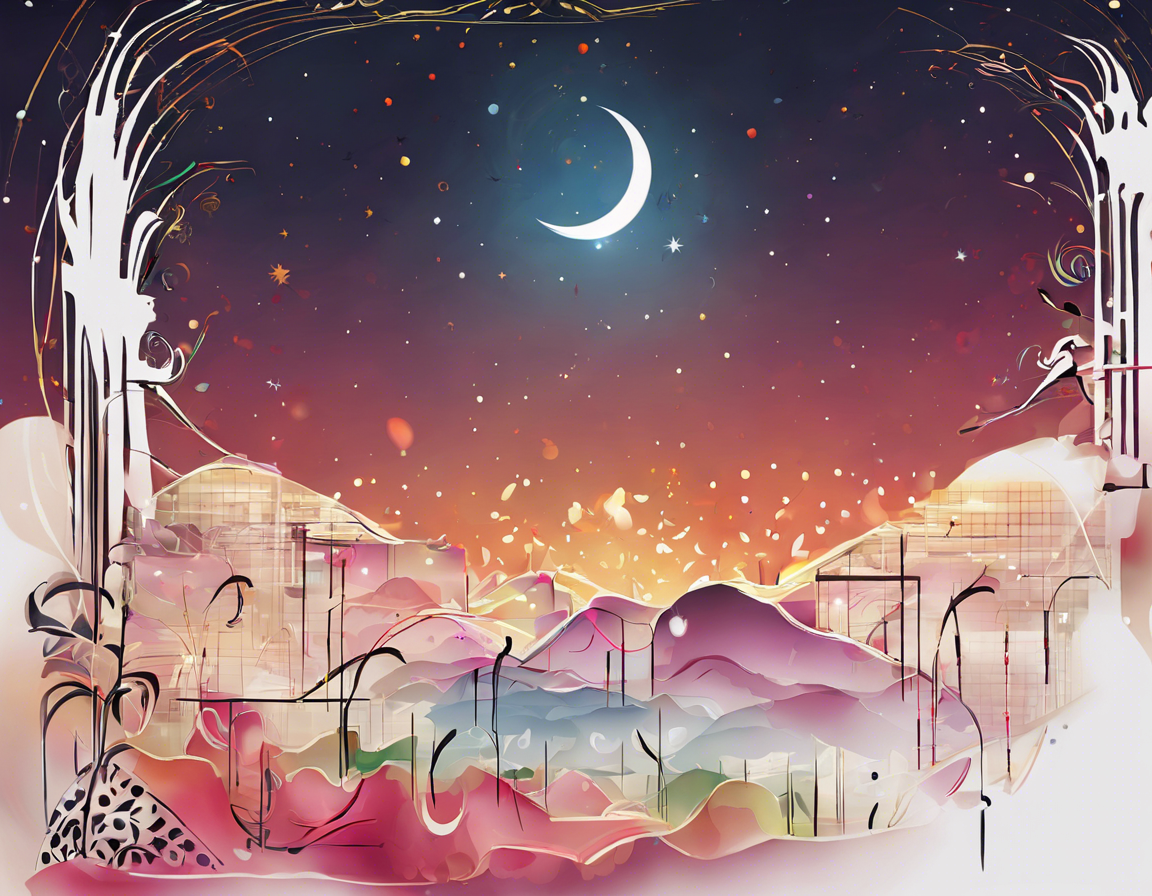Introduction
Understanding the appearance of the moon is a fascinating aspect of celestial observation that has intrigued humans for centuries. The moon’s phases and rise and set times have captivated cultures across the globe, leading to the development of various lunar calendars and predictive methods. In this comprehensive guide, we will explore the factors that determine the moon’s appearance, the significance of its phases, and how to predict its emergence using various tools and techniques.
The Moon’s Phases
The moon’s appearance changes as it orbits the Earth, leading to distinct phases that repeat in a predictable cycle. These phases are primarily determined by the relative positions of the Earth, the moon, and the sun. The four primary phases of the moon are:
- New Moon: During a new moon, the side of the moon facing Earth is not illuminated by the sun, making it appear invisible in the night sky.
- Waxing Crescent: This phase occurs as the moon transitions from new to full, with a small sliver of the moon’s right side illuminated by the sun.
- Full Moon: The full moon occurs when the side of the moon facing Earth is fully illuminated by the sun, appearing as a complete circle in the sky.
- Waning Crescent: This phase marks the transition from full moon to new moon, with a decreasing illuminated portion of the moon visible on its left side.
Factors Affecting the Moon’s Appearance
Several factors influence the moon’s appearance and visibility in the night sky:
- Orbital Position: The moon’s orbit around the Earth affects its position relative to the sun and Earth, leading to different phases.
- Earth’s Tilt: The tilt of the Earth’s axis impacts the angle at which sunlight hits the moon, influencing its visibility.
- Atmospheric Conditions: Cloud cover, pollution, and atmospheric conditions can affect the brightness and clarity of the moon.
- Light Pollution: Artificial lighting in urban areas can diminish the visibility of the moon and other celestial bodies.
Predicting the Moon’s Appearance
Predicting the moon’s appearance involves understanding its phases, rise and set times, and celestial events that affect its visibility. Several tools and techniques can help in predicting when and where the moon will be visible:
- Lunar Calendars: Lunar calendars provide information on the moon’s phases, rise and set times, and significant events such as eclipses.
- Astronomical Software: Tools like Stellarium and SkySafari allow users to track the moon’s position, phases, and visibility based on their location.
- Moon Phase Apps: Mobile apps like Moon Phase Calendar and LunaSolCal provide real-time information on the moon’s phases and visibility.
- Observation Tips: Knowing the best times and locations to observe the moon can enhance the chances of seeing its different phases clearly.
Moonwatching Tips and Techniques
To fully enjoy and appreciate the moon’s appearance, consider the following tips and techniques for moonwatching:
- Use Binoculars or a Telescope: Observing the moon through binoculars or a telescope can reveal intricate details on its surface, such as craters and maria.
- Find a Dark, Open Space: Avoid light pollution by observing the moon from a dark location with an unobstructed view of the sky.
- Learn Moon Maps: Familiarize yourself with moon maps to identify prominent features like the Sea of Tranquility and the Tycho crater.
- Photograph the Moon: Capture stunning images of the moon by using a DSLR camera or a smartphone with a telephoto lens.
- Join Astronomy Groups: Connect with fellow moon enthusiasts through astronomy clubs and online forums to share observations and experiences.
Frequently Asked Questions (FAQs)
-
When is the best time to see a full moon?
The best time to see a full moon is when it is rising above the horizon at sunset, providing a stunning visual display. -
Can the moon be visible during the day?
Yes, the moon is often visible during the day, especially during its waxing and waning phases. -
Why does the moon sometimes appear larger on the horizon?
The moon appears larger on the horizon due to an optical illusion known as the “moon illusion,” where our brains perceive the moon to be closer to objects on the horizon. -
How does the moon affect tides on Earth?
The gravitational pull of the moon, along with the sun, causes tides on Earth, influencing ocean levels and coastal regions. -
Can the moon’s appearance predict weather patterns?
While the moon’s appearance does not directly predict weather patterns, certain folklore suggests correlations between lunar phases and weather changes.
In conclusion, predicting the moon’s appearance involves a blend of astronomical knowledge, observational skills, and an appreciation for the natural beauty of our celestial companion. By understanding the factors that influence the moon’s phases and visibility, as well as employing the right tools and techniques, you can enhance your moonwatching experiences and deepen your connection to the wonders of the night sky.
